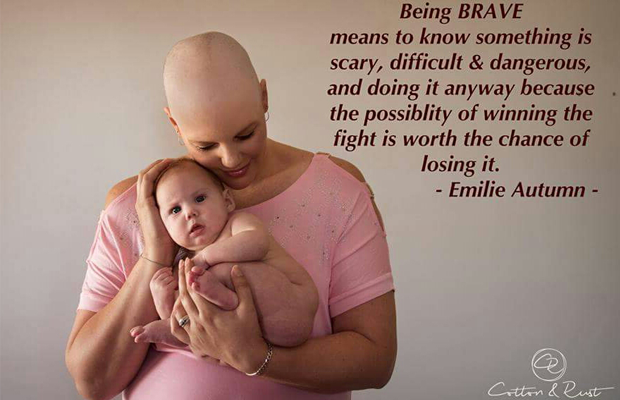Three years ago, Sheeva Talebian felt an itch on her right chest. When she went to scratch it, she noticed something under her skin.
“It was like a round, circular pea,” she says of the lump in her breast. “I thought maybe it was a pimple because it was right at the top of my skin. So I ignored it and went to bed.”
Talebian, a doctor who is director of third party reproduction at the Colorado Center for Reproductive Medicine in New York City and is a co-founder of Truly-MD, had received a mammogram just six months prior. But she called her gynae anyway.
Her doctor said the small lump in her breast was probably nothing, and an ultrasound and second mammogram didn’t show anything concerning. But when she sought a second opinion, Talebian’s phone rang within 24 hours: “I dropped the phone and gasped,” she says.
“They told me I had invasive breast cancer.” The 6mm lump was tiny – small enough that Talebian herself had forgotten about it for a few months after she first noticed it – but her entire right breast had pre-cancer cells, and it had spread to surrounding tissue.
Read more: 5 cancer screening tests every woman should have
Fortunately, Talebian and her doctors caught her case early. She underwent a double mastectomy to remove the breast lump and surrounding tissue and was able to avoid chemotherapy treatment.
“I’m a doctor, but I have to be honest, I wasn’t doing a self-breast exam every month,” she admits. “I barely had any breast tissue, so in my head, I was like, ‘What am I even feeling?’ There was nothing really there.”
Now, of course, Talebian is adamant that women take control of their breast health. And turns out, that doesn’t necessarily mean monthly self-exams.
“We’ve always told women to do self-exams in the shower or lying down with one arm up, and to slowly and deliberately feel their way around the breast and nipple and into the armpit,” Talebian says. “But now there’s this new concept of breast awareness.”
That phrase about knowing something like the back of your hand? Today, gynaes are advocating that you know your breasts that well.
“Once you reach late adolescence or your early twenties, you should know what your breasts look and feel like,” Talebian says. “Know their size, shape, how they look in the mirror, how they feel, run your fingers across them occasionally – that way you know if anything suddenly feels different.”
Like Talebian, many women aren’t diligent about performing regular and frequent self-exams. So embracing breast awareness – particularly after ovulation but before your period – could be the key to noticing changes in your breast tissue.
Read more: 3 random things that can Totally mess with your mammogram results
So let’s say you feel something. Now what?
“Do something relatively quickly,” says Talebian. “You don’t need to page your doctor at midnight, but if you’re 100% certain what you’re feeling is new, call your gynaecologist, primary care physician or internist. Explain that you feel something that wasn’t there before and stay calm.”
The reason to act quickly isn’t necessarily that the case can worsen within 24 hours – it probably won’t – but so you don’t forget about it.
“If you put it out of your mind, eight months down the road it may be bigger and you’ll remember you never made that call,” Talebian says. “It’s never too early or too silly to bring your concern to a healthcare provider’s attention.”
Read more: This really simple image could actually help you detect breast cancer
And remember, the earlier you can catch potential signs of breast cancer, the better.
“Breast cancer is one of the very few cancers we do have screening tools for, and if it’s caught early, that can have a huge impact on your overall prognosis,” Talebian says. “Breast cancer can start as a small bump, and it may take several years before it metastasises and you start to experience pain or symptoms from it. So there are no excuses. Most often it’s nothing or it’s benign, but in the off chance it is cancerous, the earlier you deal with it, the sooner you can put it behind you forever. If you feel something, don’t ignore it.”
This article was originally published on www.womenshealthsa.co.za
Image credit: iStock









